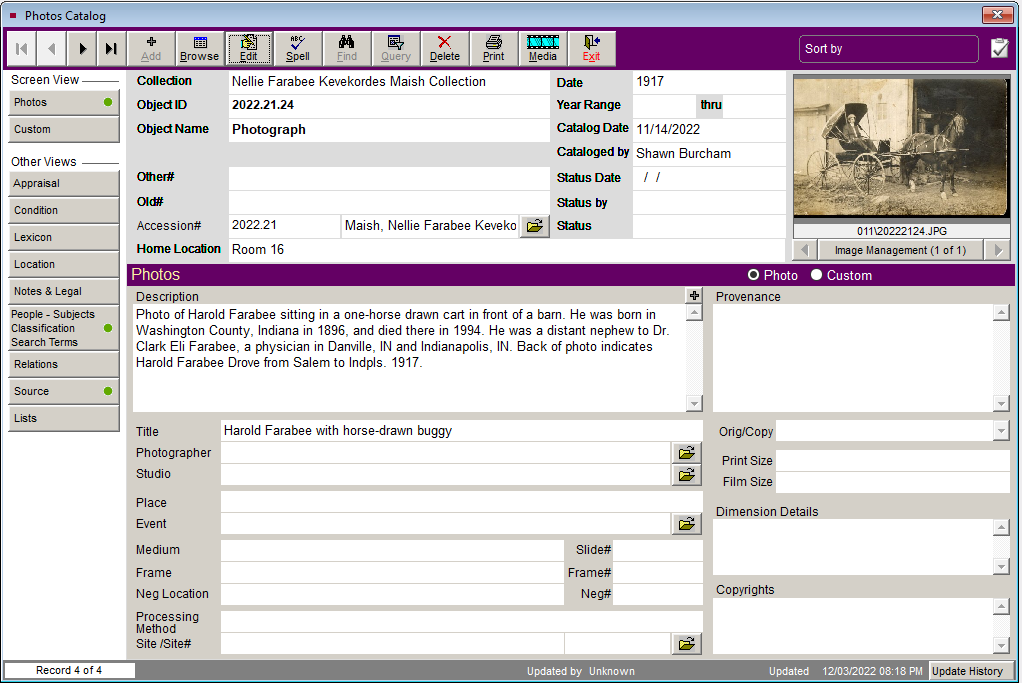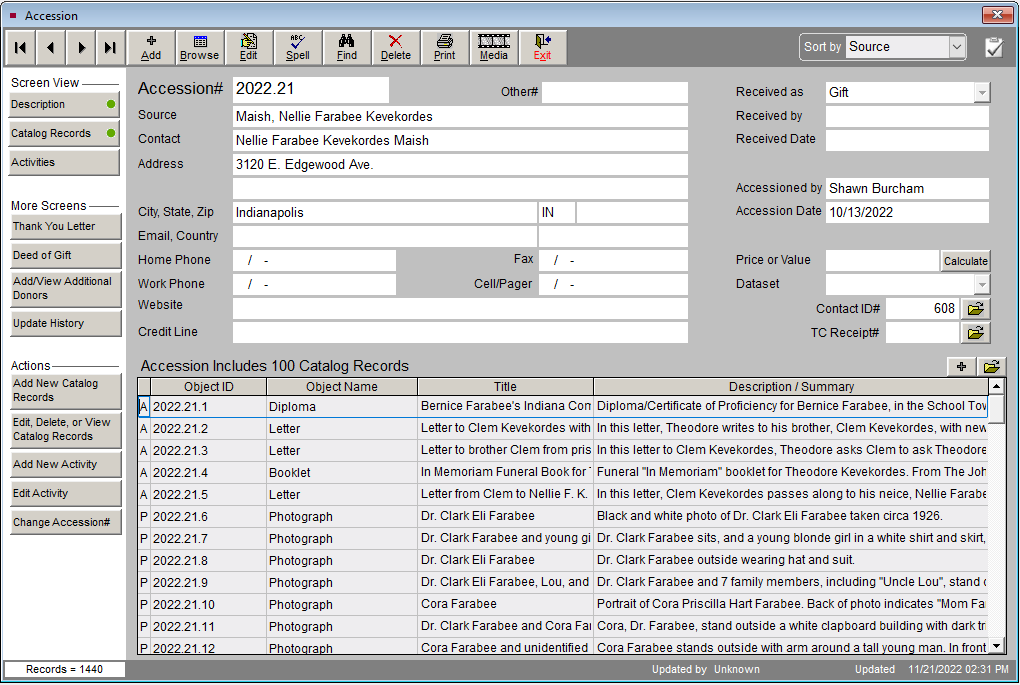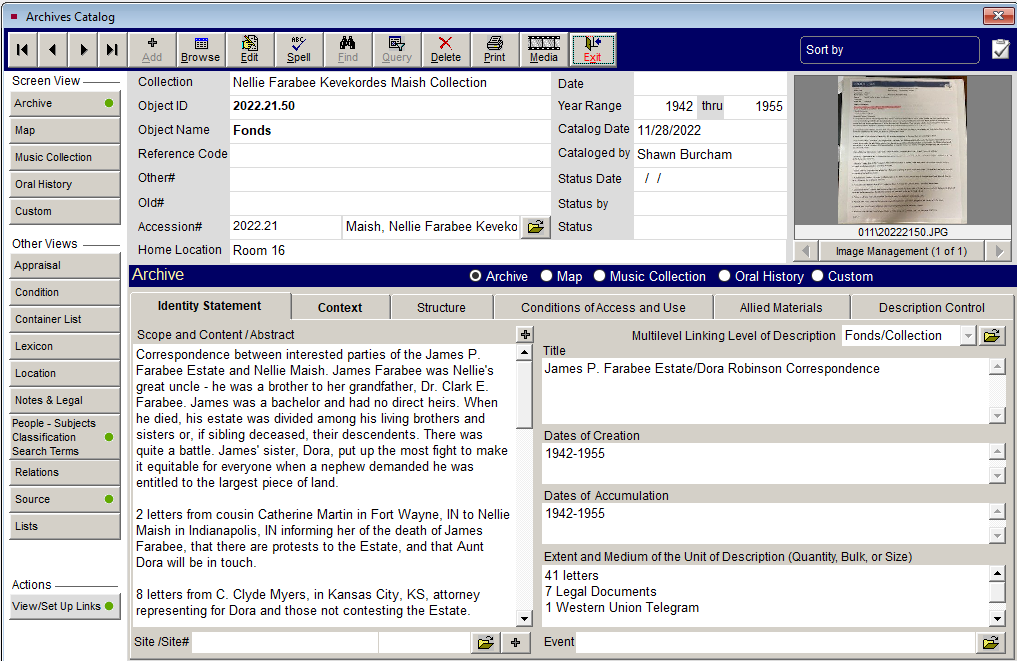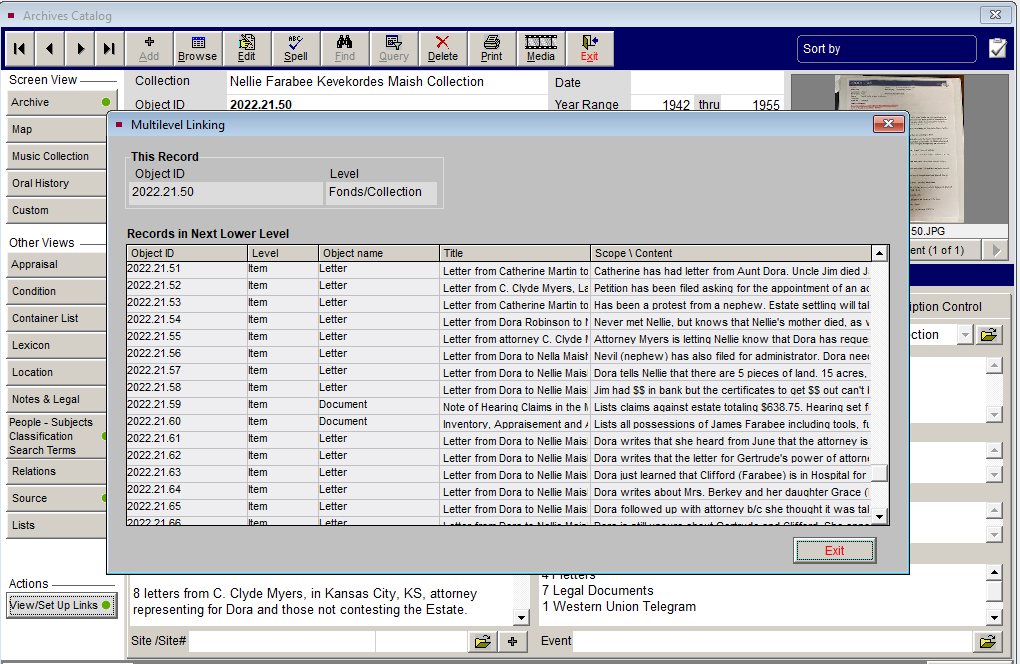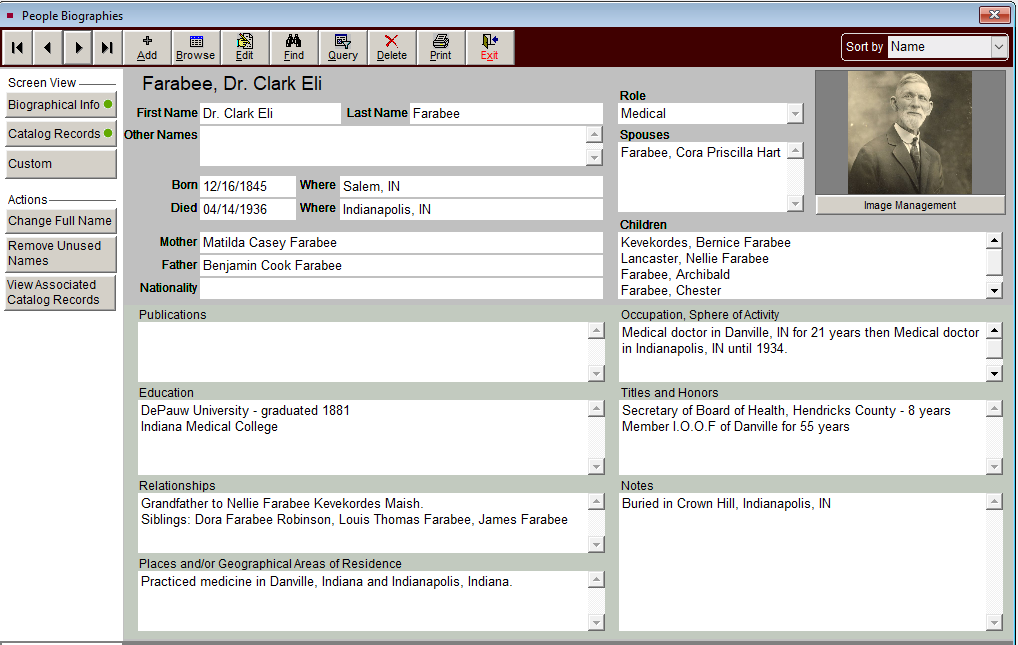Getting to Know PastPerfect 5.0
I had a bit of a "crash" course in learning about PastPerfect 5.0. Shortly before I started, the Museum experienced a hard drive failure and not only did they lose their PastPerfect software, but they feared they had also lost all data - the most recent backup was on the hard drive that failed and it was not recoverable. I volunteered to work with PastPerfect support and the Museum's IT contact to restore the software. After some digging, we located a backup that was 18 months old, but it was way better than not having anything at all. I read way more of the User Guide than I had anticipated, but I learned a lot about software set up and backing up data!
After the software was restored, I trained with a museum volunteer on entering accessions. I was surprised at the complexity of entering accessions, and a little overwhelmed at the amount of information that can be entered. I quickly understood that the Museum uses only a fraction of the software's capabilities. For a week or so, I entered the "lost" accessions which was a great opportunity to learn the software and its functionalities. When I felt comfortable enough, I started entering items from my researched collection.
After the software was restored, I trained with a museum volunteer on entering accessions. I was surprised at the complexity of entering accessions, and a little overwhelmed at the amount of information that can be entered. I quickly understood that the Museum uses only a fraction of the software's capabilities. For a week or so, I entered the "lost" accessions which was a great opportunity to learn the software and its functionalities. When I felt comfortable enough, I started entering items from my researched collection.
Accessions
Below is a screenshot of a catalog item in the accession. The overall accession number is 2022.21. Adding the '.24' creates the Object ID. The Object Name is selected from the built-in Lexicon, Nomenclature 3.0. PastPerfect allows a lot of flexibility with Lexicon, permitting edits and additions as needed for unique environments.
The Collection Data to Date
I estimate there to be more than 1,000 items in the collection. To date, I have digitally archived 100 of those items including 51 in the archives catalog, 16 in the photos catalog, and 1 in the Objects catalog. Here is the overall accessions screen - with the first few catalog items listed.
The "Fonds"
While reading the PastPerfect User Guide, I came across "Multilevel Thinking" and the term "Fonds" which (per the User Guide) is "the whole of the documents, regardless of form or medium, organically created and /or accumulated and used by a person [or] family...in the course of the creator's activities and function." Since there are several smaller collections within this collection, this sounded like something that would be useful. To be honest, the instructions in the User Guide aren't the greatest, but through trial and error, I figured it out. I created a Fonds for the James Farabee Estate which is a collection of documents (letters, legal documents, etc) beginning in the early 1940s. James Farabee died without a will or direct heirs, and the family battled it out over money, personal belongings, and real estate. This is the overall Fonds page which includes a general list of the items in the Fonds.
And below are the catalog (or "child") records within the Fonds (parent record.) Note that even though the Fonds is considered a collection, it is still under the umbrella of the Nellie Farabee Kevekordes Maish collection. The Fonds allows a user to readily see all items associated with the James Farabee estate without having to search through the entire collection or performing a keyword search.
People Bibliographies
A PastPerfect feature somewhat unique to museum software is the ability to build biographies of individuals in the overall collection. This is particularly helpful for local history museums that hold archives on area families. As information on area individuals is collected, it can be added to their biographies, saving genealogists or researchers time and effort. This feature would also be helpful for creating exhibits about families. Here is the biography for Dr. Clark Eli Farabee. By clicking on the "View Associated Catalog Records" tab to the left, the user can see all items in the Museum's collection that are associated with Dr. Farabee.
